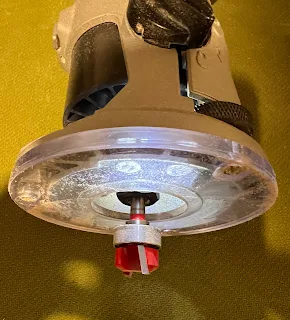- Get link
- X
- Other Apps
When Brian May and his father Harold built the original Red Special guitar, they famously used only hand tools, such as chisels. It took them a couple years to finish the instrument.
Fortunately, in modern times, we have handheld power tools, such as routers, along with templates and jigs. We still use hand tools where needed, such as spokeshaves and rasps for carving a guitar neck, and chisels for detail work, but power tools improve speed and accuracy.
I purchased a set of Red Special templates — I won't name the source — but when I checked them against photographs in the Red Special book and other sources, I didn't think they looked right. I had the images enlarged to life size, and confirmed that the templates were wildly wrong.
After making drawings from the enlarged images, I traced them onto medium-density fibreboard (MDF), and carefully cut and sanded my own templates.
I used the X-ray images from the Red Special book to help map out the guitar's internal cavities, including some of the idiosyncrasies, for example, the different curvature in the top and bottom sections of the upper sound cavity shown here:
One of the advantages of using MDF is the ease with which changes can be made. It's simple to glue scraps back in, and redo details.
Update #1: Ultimately, I made templates for the entire guitar, including the internal structures, pickup placement, and the neck, headstock, and fretboard.
Update #2: After using the templates to build a prototype guitar, I used them to create acrylic master copies that are more robust. In turn, I use the acrylic templates to make working MDF copies. You never know when a slip-up is going to take a chunk out of a template.









